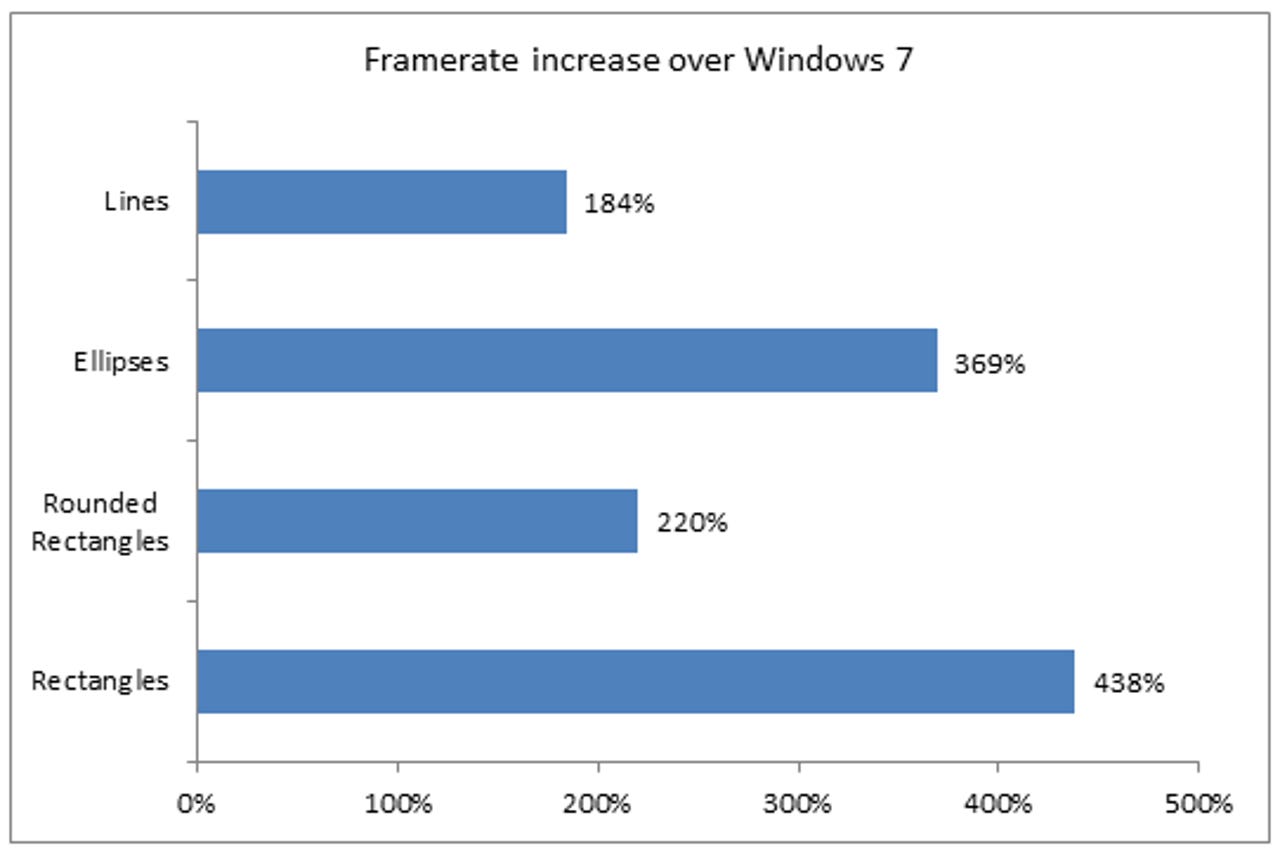Microsoft details Windows 8 graphics performance gains through hardware acceleration


Windows 8 is getting buzz for its Metro interface, touch-screen capabilities, and even for Microsoft's decision to remove the Start button from the legacy desktop view. But the company says it's been working hard on improving overall performance with its latest OS, and a new developer blog post describes in great detail how Microsoft's done it.
In particular, Rob Copeland, a Microsoft group program manager for its graphics team, discusses how Windows 8 makes greater use of hardware acceleration from graphics chips as well as taking advantage of new DirectX features. The tweaks have led to improvements in the following capabilities, according to Copeland:
- Text rendering, including paragraphs, titles and headings, and UI controls
- 2D geometry rendering for lines, ellipses, rectangles, and rounded rectangles
- Image rendering for popular formats like JPG, PNG, and GIF
- Optimizing mainstream (non-game) app rendering performance using DirectX
According to internal benchmarks, the performance gains over Windows 7 are indeed impressive -- such as a 336-percent framerate increase in handling titles and headings, a 438-percent framerate increase in rendering rectangles, and a 40-percent reduction in time to render a group of 64 images.
Microsoft also says Windows 8 is relying on the improved power of today's powerful graphics cards to help accelerate different types of content using the new Direct3D 11.1 API. On the other end of the spectrum, it's also trying to perfect the balance between performance and battery life in mobile devices running Windows 8, like forthcoming tablet PCs using the new operating system. For example, it allows graphics hardware to render using less precision in order to process more data simultaneously and improve power efficiency.
Of course, how this all correlates to the performance you see on your system is yet to be determined. If you've downloaded an early version of Windows 8, have you noticed an increase (or decrease) in performance in apps and games? Let us know your findings in the Talkback section below.